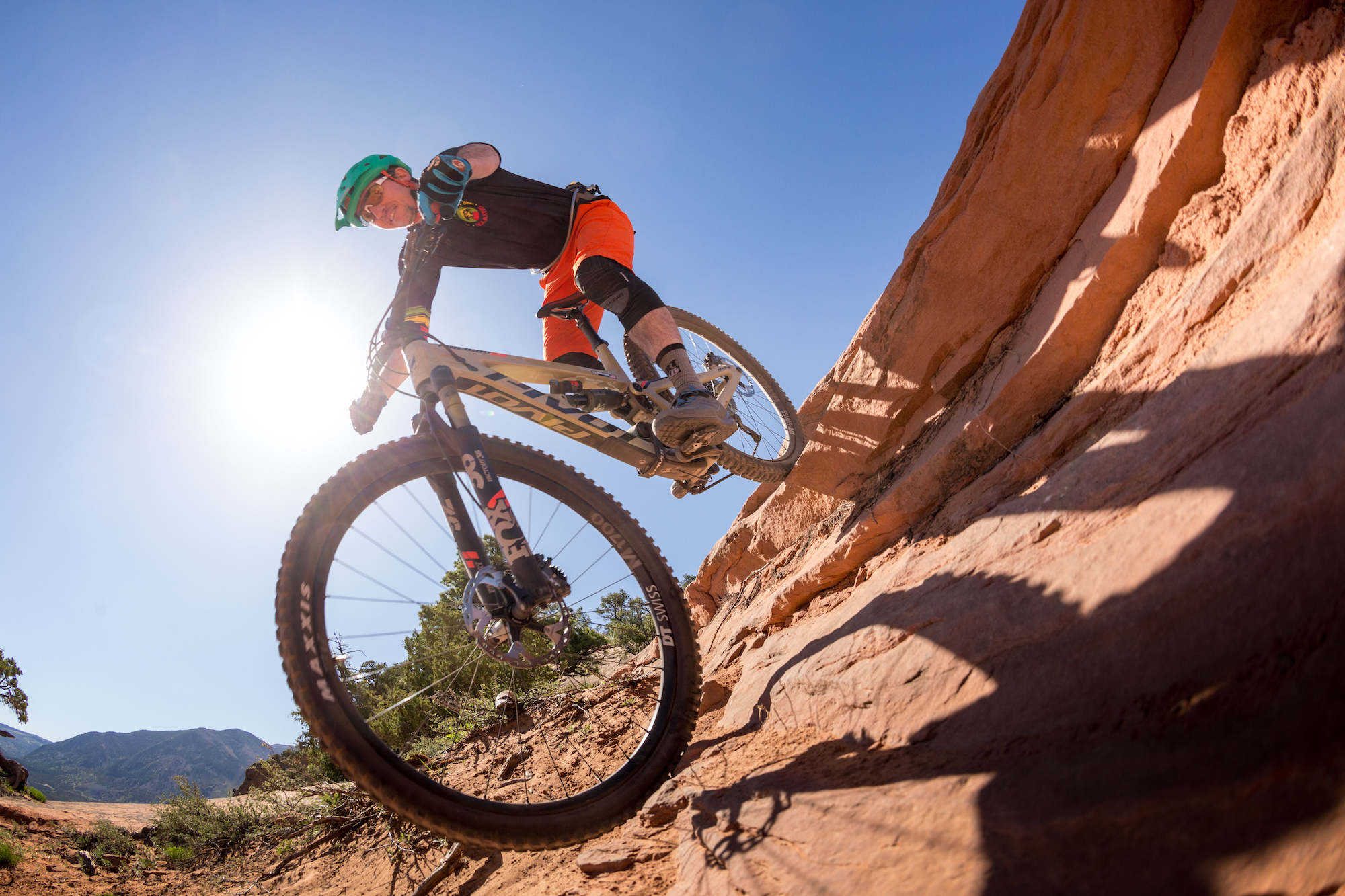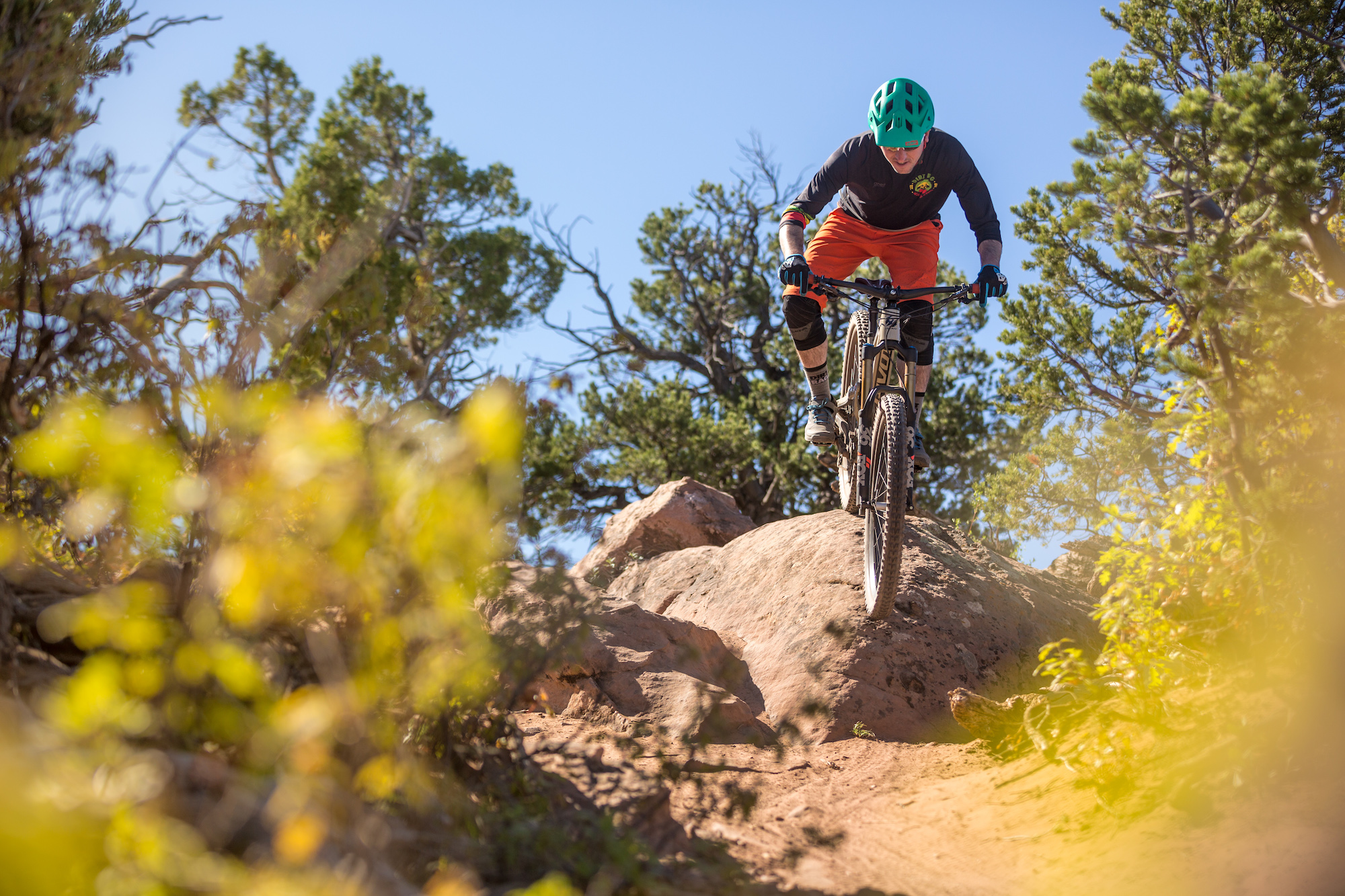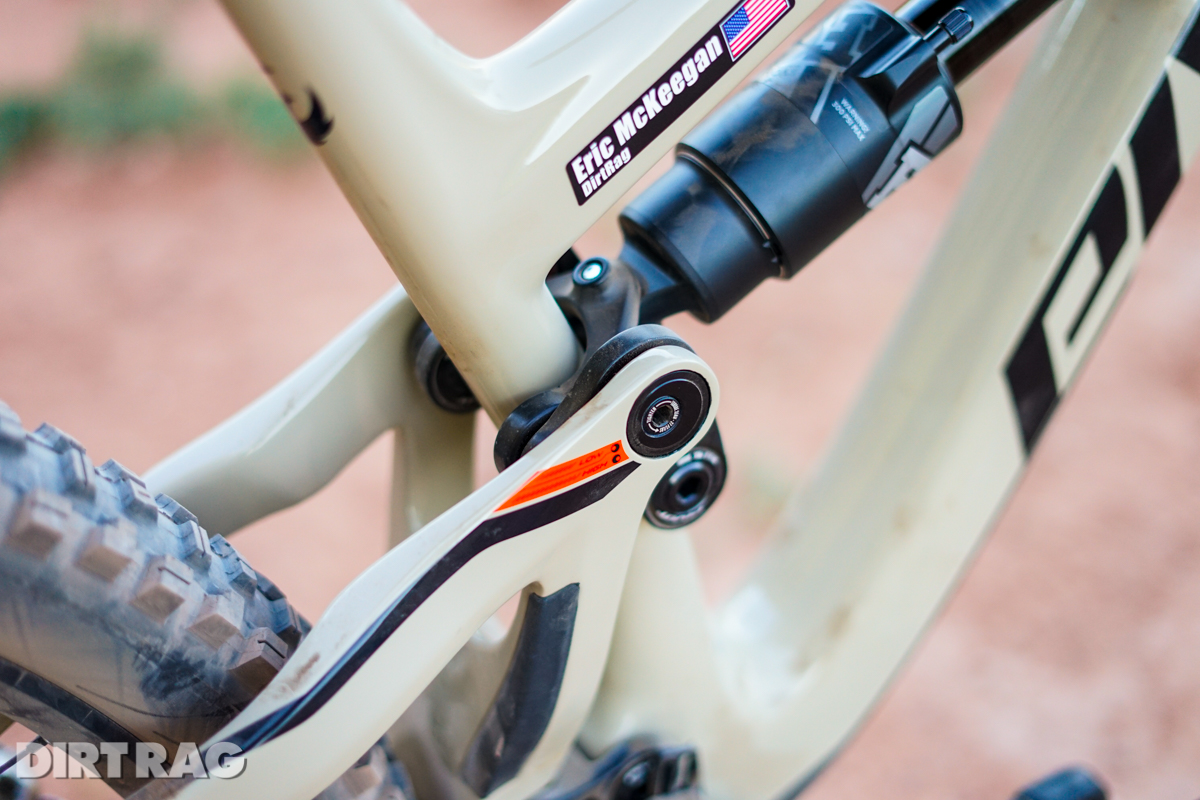Pivot Firebird 29 – First Ride
Originally posted on June 20, 2018 at 3:01 amPivot invited us out to ride the new Trail 429 in Moab last month in Moab. The assembled media had a blast, but when Pivot’s head honcho, Chris Cocalis unexpectedly wheeled out a this new Firebird 29 no one asked to stay on the Trail 429 for the next day’s ride.
The Firebird 29 is Pivot’s answer to the super-smashy 29er. With 163 mm of dw-link controlled rear travel matched to a 170 mm fork, this bike is designed to win enduro races, crank out bike park laps but still handle day to day use as a trail bike, albeit a big-ass trail bike.
Somehow, Pivot managed to keep the weight of this bike lower than I expected, with a claimed frame weight of 7 lbs. with shock. That mean a sub-30 lbs bike is possible, although that means $$$ and things like carbon wheels. But considering this bike is as strong as most downhill bikes, there is little to complain weight-wise.
The reach on the Firebird 29 is long, the longest of any bike from Pivot to date. The chainstays are right under 17 inches, and the fork uses the new 44 mm reduced-offset option. Pivot claims the bike will fit riders from 5’4″ to 6’2″ and up. Since the seat tubes are so short, most riders can fit on at least two sizes, with plenty of room left over for a long-travel dropper. Pictured above is a medium with a 150 mm dropper. I’m 5’11” for reference, and usually ride a large bike, but Cocalis put me on a medium. This the first medium I’ve ridden in five years or more that I didn’t wish I was on a large. This is a loooong bike.

The Firebird 29 has a flip chip and an extended lower headset cup for geometry adjustments and to adapt to various wheel and tire choices. The frame can fit tires from 27.5×2.8 to 29×2.6. Pivot doesn’t seem to want to dictate what settings to run with what tires, and the flip chip is an easy adjustment to make trailside with a hex key.
Just like the other two 29er trail bikes in Pivot’s line up, the Firebird 29 uses Super Boost Plus spacing. That is the 157 mm spaced rear hub with almost symmetrical flange spacing for a stiffer, stronger rear wheel. Pivot manages to keep the q-factor low even with the wider rear hub, and I had zero issues with heel rubbing.
The rear swingarm uses a wishbone shaped upright. Eliminating front derailleur compatibility means more room for a stiffer, stronger and lighter swingarm and linkage.
There is even a little mini-clevis tucked into the linkage, small enough that I missed seeing it until Cocalis brought it up.
A Fox 36 with the GRIP or GRIP2 damper comes on all-build kits, and the rear shock can be either a Fox X2 or DPX2. A bottle can be mounted under the downtube, but Pivot decided to put the shock and linkage in the best place for weight and performance and let the bottle fall where it may. In this case, the bottle goes under the downtube.
I won’t bore you with a listing of build kits, but prices start at $5,099 for an XT build and go up to $9,199 with Reynolds carbon wheels and XX1.
The Ride

We got about as high up as the snow and shuttled allowed us on the Whole Enchilada and made our way all the way back down. The ride started with a steep climb out of the parking lot, which was enough to tell climbing wouldn’t be a chore on this new bike. There is a platform lever on the rear shock, but other than flipping it a few times to see what it would do, it is never really needed. The seat angle isn’t steep by modern standard (74.5 degrees) but with the rear suspension always riding high in its travel I expected to see something closer to a 76-degree angle on the geo chart.
Going down, I experienced some wheel flop in the first few turns, which was a little unexpected, but within the first mile or so the floppy feeling went away. Maybe it was the reduced offset? Maybe it was spending the previous day on a much shorter and steeper bike the day before? Who really knows?
But the rest of the day was without complaint. Even on the medium, the Firebird felt plenty big to handle everything the trail could dish out. I don’t think I would have complained about a longer reach, but at the same time, it might have started to feel unmanageable in the slower, more technical bits of trail.

I rode the X2 shock, which felt very traction-y and glued to the ground. Cocalis says he runs the DPx2 for a poppier more lively feel, and swaps in the X2 for a more controlled and fast ride. Pedaling performance was flat out amazing for such a big bike. It just always felt efficent enough.
The bike felt plenty stiff to me, and very, very capable, but it seemed happy plinking along at my less-than-a-fast-guy speeds. It also bailed me out of countless bad line choices, poorly timed drops and some fatigue-induced sloppiness.
The Firebird 29 is a serious contender in the big-trave, big wheel game. But it is also a very versitile bike, able to handle a range of tire and wheelsizes to adjust to various trail conditions. My ride time wasn’t long enough to really go more in depth, but I wouldn’t hesitate to recommend finding a demo to ride before you buy any other bike in this category.
It should be interesting to see what Pivot team rider Eddie Masters accomplishes this year on the Firebird 29.
[wonderplugin_gallery id=”66″]





